The Gift of South Dakota
Subscriptions to South Dakota Magazine make great gifts!
Subscribe today — 1 year (6 issues) is just $29!
Painting Hay Camp
Oct 4, 2017
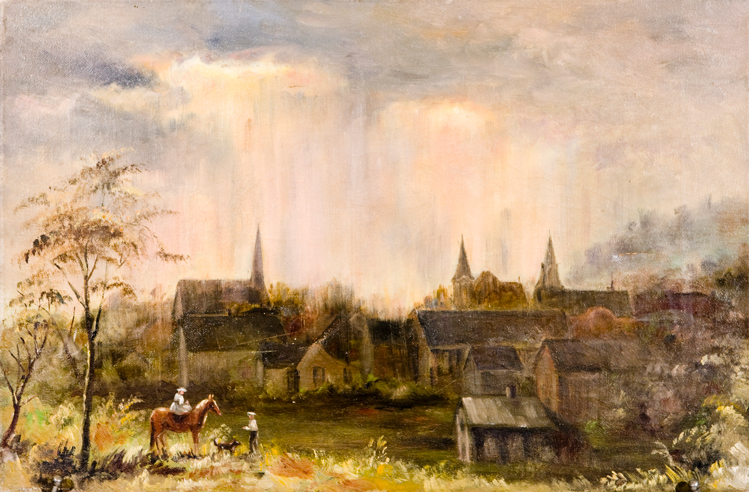 |
| Sandstorm. |
Artist Grace French migrated from New England to Rapid City when it was still a dusty cow town known as Hay Camp and became a fixture on the local art scene — as both painter and educator. We recently sat down with Donna Fisher, secretary of the Journey Museum's board of directors in Rapid City, to talk about one of the Black Hills’ earliest artists.
What is the Grace French story?
The Grace French story is really two things. One is tracing the career of a woman who came to Rapid City early. Rapid City was founded in 1876 during the gold rush, but the real centers of activity were gold towns. Rapid City at that point was called Hay Camp. It was a little market town on the front range, not where all the action was.
She was formally trained at the Museum of Fine Arts in Boston. At the time that was a very progressive school and women were able to study alongside men. In terms of art education it would have been considered cutting edge.
 |
| Grace French. |
There was also a Normal School movement in New England that was very progressive in terms of training children in art. So she came with that experience.
She taught at the first university in the Black Hills, in Hot Springs, called Black Hills College. She lived with her mother [until she passed away in the 1890s] and sister in Rapid City and worked as both a painter and as a teacher, with a studio in her house.
You sent your kids up to art classes at Grace French’s — you wanted your kids to have culture. Everybody had piano lessons. If you were affluent enough you sent your kids up there, and the French sisters gave lessons to kids from families who couldn’t afford to pay.
She died at age 84 in 1942. Her ledger in 1939 shows that she was still sending a painting out to an exhibit. So she had a very long career as both a painter and a teacher.
As a painter — in the days before color photography, we have lots of black-and-white pictures from that era, but we really don’t have a sense of what the landscape and the color looked like, except for Grace. She was the dominant figure in the local scene.
In 2007, we did a big exhibit at the Journey Museum. When we started researching, we discovered stories that indicated her father was fairly wealthy and that his money had enabled these two women — Grace and Abby French — to live as artists. That was the popular lore, that he had stock in Homestake. What we learned through work with genealogists and [researching] family history was that her father was not a wealthy man. He was a mill worker when he died [in 1875, before the Homestake deposit was discovered]. Her mom was widowed when Grace was 17.
In fact, the French sisters were sturdy pioneer stock who were entrepreneurs, teachers and cultural influencers in Rapid City on their own.
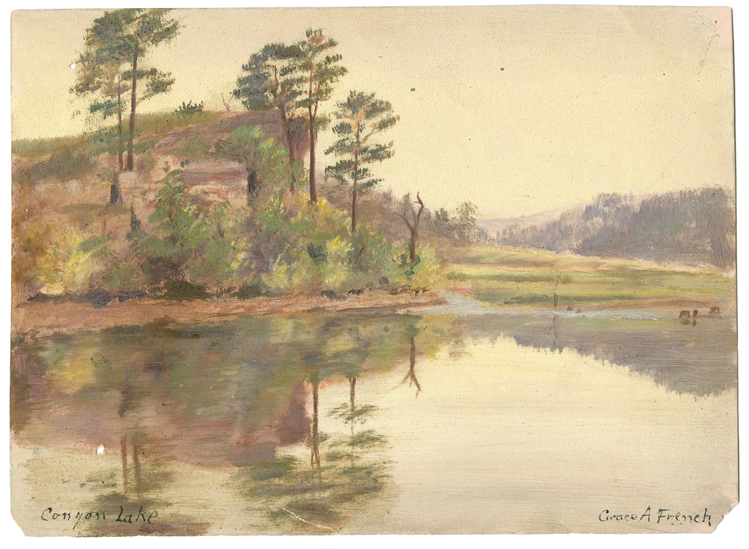 |
| Canyon Lake. |
How did Grace French end up in the Black Hills?
She came out with her mother in 1885 from Boston. And here was this very progressive, thriving New England city — a heart of culture — and she must have loved it.
Her brothers and her sister came out to the Black Hills in about 1882 or 1883. The hysteria of the gold rush was fading but things were settling in, in mining expansion in the Northern Hills and Rapid City was a little merchant town with dusty streets and stagecoaches and freight wagons and lots of wood frame buildings. One brother had a sawmill.
Grace and her mother came out in September of 1885, by train to Fort Pierre, where they would have gotten onto a stagecoach because there was no train across the Missouri River. I always think of this woman who had just been walking along Commonwealth Avenue in Boston stepping off of that stagecoach onto a dusty, gravel street.
The brothers left within a couple of years. The mom and two sisters stayed and they built a house in Quincy Street that was up on a hill overlooking this little prairie town. She painted a lot of pictures looking down across Rapid City. We have sketches of important buildings that are gone now. We have a display of smaller works at the Journey, and probably the ones that best illustrate Rapid City history — the Alfalfa Palace, the early church spires, historically significant places.
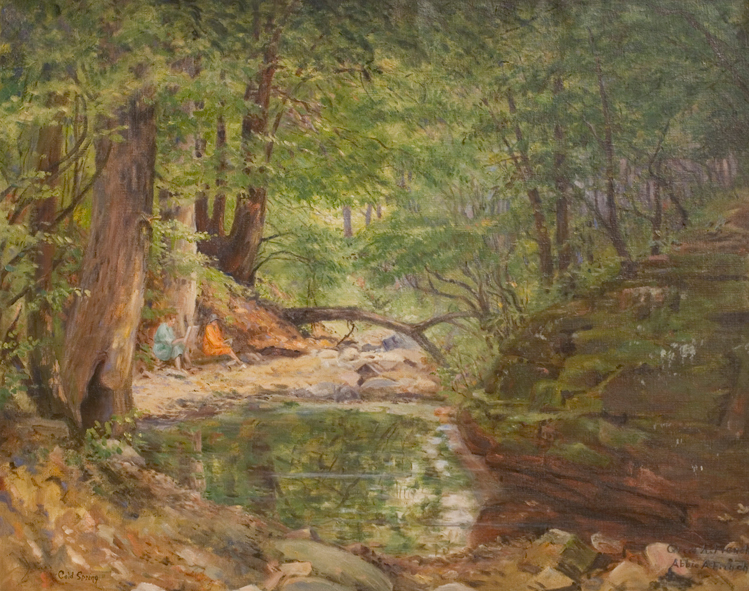 |
| Cold Spring. |
What other subjects did she feature?
She was a superb portrait painter. She and sister were both fine china painters, which was a typical art form that was acceptable for women to get involved in. For about 30 years they both did and taught china painting. She did landscapes. She did lots of watercolors and sketches. She did a wonderful drawing of Needles Highway.
There were two collections [of small works, paintings and drawings] given to the Journey Museum — one by David Strain, the godfather of Rapid City history who wrote Black Hills Hay Camp. He featured his own collections of her work in that book.
She also did big, impressive oil paintings. Abby painted with her. They would go out in their buggy and do plein air paintings by the creek or Canyon Lake. That buggy was still in a little shed in the back [of the house on Quincy] when Grace died in 1942.
When she died, her [large oil paintings] were crated and stored by her executor with the stipulation that if Rapid City ever had an art museum these paintings should be given to the museum that formed. When the Dahl opened in 1975, a truck pulled up in front and they started unloading these big crated paintings. And they’re now in the Dahl [permanent] collection.
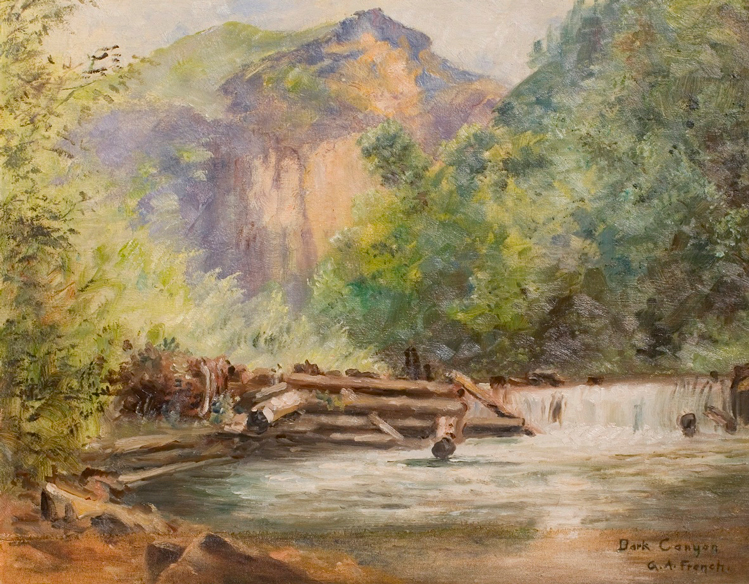 |
| Dark Canyon. |
Do you think there’s a lot of her work out there in private collections around the region?
It drives me crazy. Yes, the bulk of her stuff. There’s a photograph of Grace as an elderly woman in her home and she had paintings from floor to ceiling.
The other thing that drives me crazy — she studied with probably the leading china painter/teacher in America, Franz B. Aulich, in Chicago. Those little pieces — it’s what you did, you had these pieces of china painted by the French sisters. But it was something that fell out of fashion. World War I came and the porcelain wasn’t imported from Europe any more.
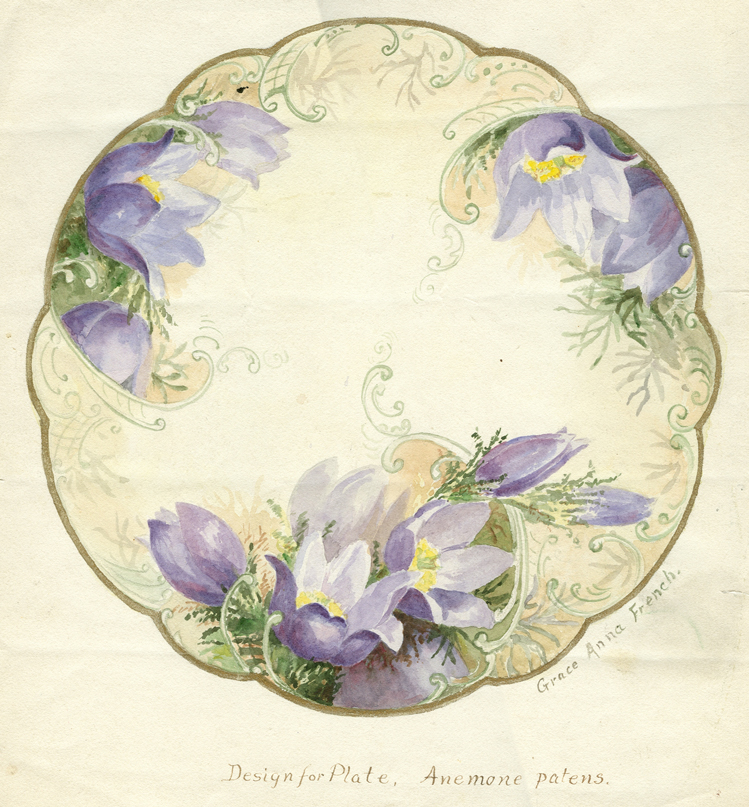 |
| A china plate design by Grace French. |
But also styles were changing. If you think about the 1920s, it was a very different era from the 1900s — ladies sitting around drinking tea à la Downton Abbey kind of thing. All of a sudden instead of the elegant, quite proper world, we had flappers. Oddly, the sisters wore long skirts and 1900s-era blouses, and their long hair twisted up in a bun, long after everybody else didn’t.
What other social activities was she involved in?
[The French sisters] were founders of the Christian Science church here. They were also super active in the Women’s Christian Temperance Union — which was not only an anti-alcohol thing. The Temperance organizations were very involved in the vote for women.
Women could vote in school board elections, but even that was considered very controversial. And early records show that five women voted in the first school board election [in which women were allowed to vote]. One of them was Alice Gossage, the editor of the Rapid City Journal, and two of the five were the French sisters. That’s strong evidence that they were pretty spunky ladies.
Michael Zimny is the social media engagement specialist for South Dakota Public Broadcasting in Vermillion. He blogs for SDPB and contributes arts columns to the South Dakota Magazine website.


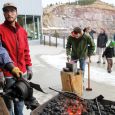



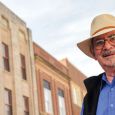



Comments
Not the same Grace French, but I was intrigued nevertheless. Nice article here.